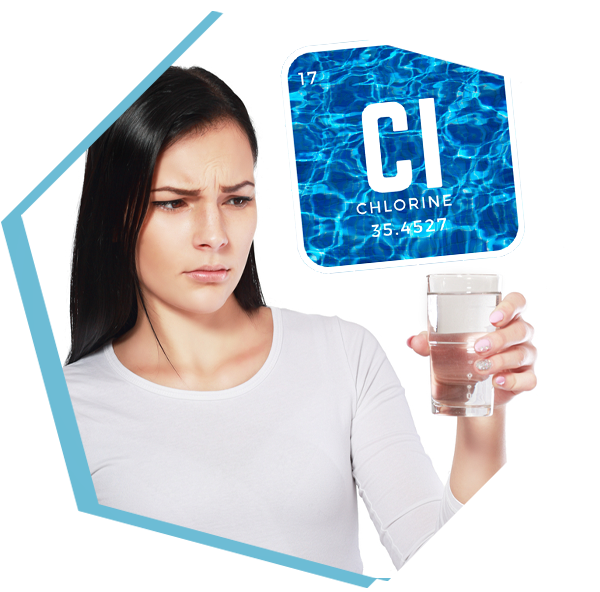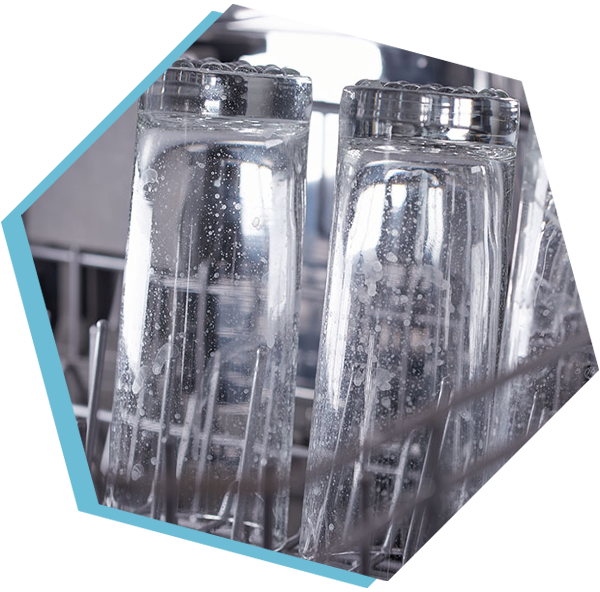Neutralizing Filters
Neutralizing filters (sometimes called pH filters) are specially designed filters used to correct low pH (high acidity) water conditions. Left unchecked acidic water will over time erode metallic plumbing and fixtures. This will eventually result in premature leaks in copper and galvanized pipes. Water heaters, appliances and any metallic object that conveys or touches the water will be negatively affected. While municipal water systems correct for any such condition private well owners must put in place measures to treat such water. Often the local building authority will have minimal water quality parameters required to obtain a building permit. Any water parameter outside of the maximum contaminant levels will be required to be treated prior to occupancy of a new residence. However in most cases those minimal required tests do not include pH as part of the test array. In such cases the homeowner may not even realize that a significant pH problem exists until they start seeing blue green stains on sinks or other fixtures. With houses plumbed with copper pipe acidic water will erode the copper and solubilize the copper into the water. In such cases the levels of copper in the water may elevate above the maximum contaminant levels set by the state and federal government. Newer homes are often plumbed with PEX. This is a plastic pipe that is impervious to the negative effects of acidic water. However the terminal ends of the PEX pipe systems are almost always copper pipe. Additionally the valves, appliances, water heaters and any other component in the system that is comprised of metal will be negatively affected. So even in houses plumbed in PEX or other plastic pipe materials it is advisable to correct acid water conditions.
Neutralizing acidic water can be done in a number of ways. Aeration, the feeding of an alkali such as soda ash, or the use of a proprietary ion exchange media called Crystal Right (A Water-Right product) provide alternate solutions for neutralizing filters. This article will concentrate on the use of neutralizing filters. It may be helpful to read the paper on pH prior to reading this article.
The Chemistry Involved
The basic chemistry involved in neutralizing filters is to neutralize the acid water condition of private well waters. The neutralizing filter is filled with an alkaline filter media capable of neutralizing the acidic water condition by dissolving the filter media into the water. For waters with low acid levels the use of crushed limestone is used. This naturally occurring calcium carbonate will effectively deal with low to moderate levels of acid. For higher levels of acidic water conditions it will be required to blend a portion of the limestone media with a media called Corosex (Clack Corporation). This media is composed of a more rapid acting compound called magnesium oxide. Both of these filter media have as part of their chemistry hardness compounds. Calcite is a calcium compound and Corosex is a magnesium compound. So both filter media will add hardness to the water in the process of neutralizing the acidic water. If the neutralizing filter is followed with a water softener the hardness will be dealt with there. (If a softener is desired and the nature of the acidity is within the allowable range of operation the use of the Water-Right Crystal Right media is often the better choice since acid water and hardness, manganese and clear water iron can be treated in a single unit.) It should be noted that the actual pH of the water is not the determining factor when deciding whether straight Calcite should be used or a Calcite/Corosex blend is required. The factor that determines which media to use is based on the amount of actual acid that is in the water not the actual pH level. This may seem contradictory due to the nature of the pH chemistry. Again, here is where it would be advisable to refer to the paper on pH mentioned earlier. However in brief the pH levels are mathematical expressions of the balance between the acidity and the alkalinity. A given pH of say 6 might have a high acidity and a high alkalinity with a slight edge to the acidity. Another might have a low acidity and a low alkalinity and again have slightly more acidity than alkalinity and both would have the same pH level. For this reason two different waters with the same pH level may have completely different levels of acidity. So the amount of alkalinity required by the pH filter would be very different for those two waters even though they have the same pH level. The actual acid that is the cause of acidity in natural waters is carbon dioxide. When dissolved in water carbon dioxide forms carbonic acid. The determination of which mix of filter media to use is directly tied to the amount of this acid not the pH level. The simplest method to determine which blend to use is to test the alkalinity and pH of the water to be treated. From those two numbers we can calculate the amount of carbon dioxide in the raw water. Another factor that goes into determining the configuration of the neutralizing filter is the amount of time between required replenishment of the media that dissolves during the treatment process. We do this by estimating the amount of water used in a given period of time and then from the calculation we did for the amount of carbon dioxide we calculation how much media will be consumed in a year’s time. We will often upsize the filter to allow for an approximate predicted media replenishment on a yearly basis. Longer service intervals can be calculated as well. This reduces the amount of service calls which in turn lowers the overall cost of ownership. If the client will be replenishing the media themselves this is less of a concern since the actual media cost will be the same either way. The only difference is the cost of labor if our service department does the replenishment. If the customer prefers our service department to service the filter it is much less expensive over time to increase the size of the neutralizing filter which will decrease the amount of services required over time. The increased cost of the larger filter is paid once but the service costs are paid continually over time.
Advantages of Filters
Finally, Ph filters are specially designed and constructed backwashing media filters designed specifically to neutralize acidic water conditions. They have the advantage over other systems of being low maintenance and easy to operate. They require minimal attention by the owner and function automatically without user attention. They do require periodic addition to the filter media. For this reason it is essential that they be fitted with special fill ports to allow for easy addition of the media that is used in the treatment process. Once installed and properly configured they will provide a cost effective simple to use solution to acidic water problems.















